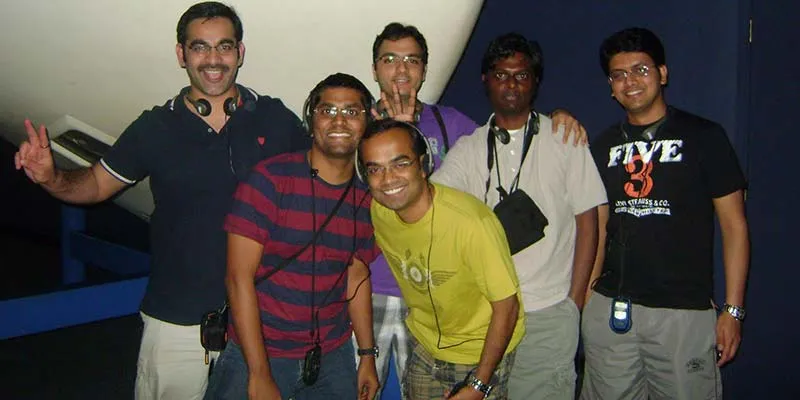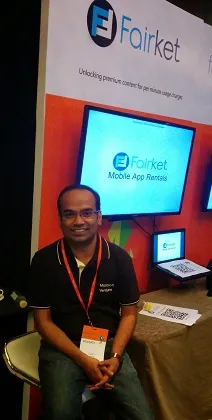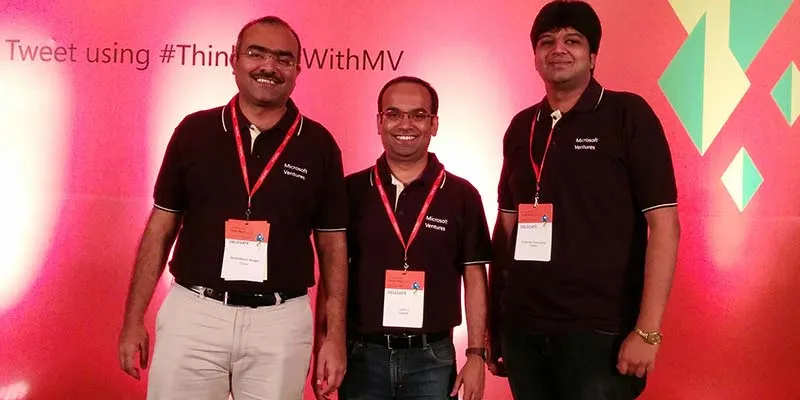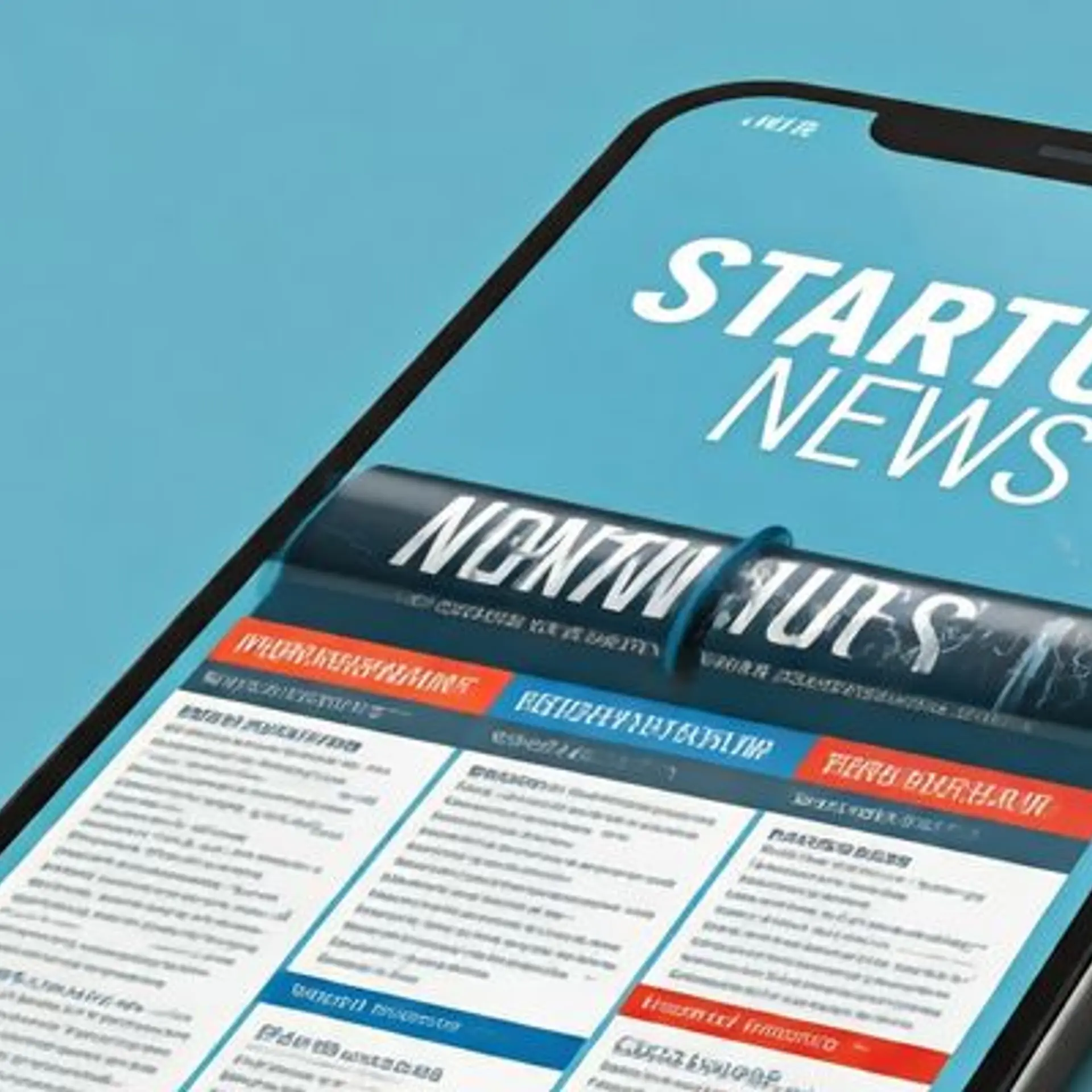[Techie Tuesdays] That 80s kid who owns 11 patents, built InMobi’s mobile SDK and co-founded two startups: Lohith Vrushabendrappa has done it all
After finishing his graduation, he worked for TCS and then switched to Samsung where he filed 11 patents. Post that he built InMobi’s mobile SDK on different platforms, and co-founded an enterprise messaging app startup which was later acquired by Paytm. He didn’t rest, started working on another idea, and for the past two years has been on it. After hearing all this about Lohith Vrushabendrappa when I went to meet him, I was expecting a sorted middle aged person to greet me. Sorted he was, but he was only 35 years of age.
Here’s an account of Lohith’s tech innovations and geeky journey in this week’s Techie Tuesdays.

That 80’s kid
Lohith’s fading memory of his early childhood reminds him of being introduced by his father as a curious kid. A Bangalorean by birth, Lohith grew up in the cultural capital of South Karnataka - Mysore. Like most of the 80’s kids, he found time for studies only during exams and was more interested in sports, football and badminton being his favorites.
After securing a perfect score in both Mathematics and Science, Lohith joined one of the top engineering institutes of Karnataka - SJCE. But more than getting admission into the Computer Science and Engineering discipline in college, he was excited about the computer he got from his parents. Lohith started spending a lot of time on the desktop and developed a few DOS games in his first year. He recalls,
Since LAN access was restricted to college and I was staying outside college, we would convert one of our friends room into a war room during weekends where we’d build a lot of interesting things, share it over LAN, play games and much more.
Also read: Harish Krishnan, the lifehacker who built ‘Slack’, ‘Quikr’ and ‘BookMyShow’ equivalents years ago
Bank’s token system and Skype’s equivalent in 2002
By the second year of college, Lohith was equipped with the knowledge of Java and Oracle DB, besides basic programming skills. His father was a Bank Manager and shared the perils of long queue with the existing token system for withdrawing/depositing cash. Lohith built and deployed a simple LED display for the token system and connected it with one of the computers in bank. He understood the importance of building products which met people's need and which solved a real problem. Lohith follows the mantra ‘Build, iterate and move ahead’.

On similar lines, when he thought about giving back to his alma mater, he built SJCE’s alumni website to facilitate communication among the students, professors and alumni. But the breakthrough innovation for Lohith was Video Meet, a tool enabling remote video conferencing, just like Skype. One could multicast the videos within college and the product was fine tuned for LAN.
The ultimate guide to file for patents and standardization
Lohith was firm on his decision of staying in India post graduation, and joined Tata Consultancy Services(TCS) through campus interview. After topping the exams in his training at the company’s Trivandrum centre, he managed to be the only guy to be allotted the Bangalore office. For a brief period of one year, Lohith was working for JP Morgan (TCS client) on credit risk products. He developed investment banking products and built modules to help the client monitor and access credit risks. But this was certainly not his destination. The itch to work at the system level was growing, with the only hurdle being the two year bond with TCS.
When Lohith decided to break the bond and join Samsung R&D, the electronics company went against their policies and paid for Lohith’s six months' salary.From 2005 to 2008, he worked on the R&D of home networking system, building smarter solutions. In the process Lohith filed 11 patents and learnt some of the key processes of standardization. He says,
During those days, Samsung was very encouraging to the filing of patents. The company provided us with monetary and documentation support. One of my patents is a design to protect screens of smartphones. Others are Open Service Gateway Initiative(OSGI) patents which are mostly service protocols which can help you figure out how devices communicate at homes.
In 2008, Samsung was building BADA because of its dissatisfaction with Symbian. Android had just started and nobody had anticipated the scale it has now reached. It was during this time when Lohith moved from R&D to the Android core team. Closely working with the headquarters (Korea), he was looking into frameworks and app layers. He was majorly looking into the video telephony and other 3G video solutions. Towards the fag end of his Samsung stint, Lohith was working on 3G and 4G, and helped the company deploy video calling with TMobile in US. He was the leading video editor for the first range of Samsung galaxy smartphones.
Related read: Badrinath Kulkarni – The Android flag bearer from Dharwad behind Redbus and Flatchat app
Building the mobile SDK which is on more than a billion devices today
In his five years at Samsung, Lohith had started reading about startups. He even wanted to build a product and have his own startup. With the lack of experience to take this step, he thought of joining a startup in order to learn. Lohith had an option to join Google or InMobi. But with the vision to start his own venture in next 2-3 years and the excitement about what InMobi was building, he chose InMobi. He was looking forward to go through the struggles and steep learning curve at a startup. Irony hit Lohith when he ended up interviewing the same guy for InMobi, who had interviewed him at Google.

Lohith was heading Mobile Engineering at InMobi, taking care of both architect and mobile solutions. He built the mobile SDK of the company on different platforms like in iOs, android and Javascript. Eventually, the one-member mobile solutions team grew to 12 members and the SDK is now integrated and running on more than one billion devices. These SDK make the whole gaming experience subtle with an ease of integration for developer and users. Lohith says,
On the new SDK launch, we have worked with few partners like Angry Birds and Zynga Poker. The robustness of the solution was very important with the sheer magnitude of our reach. Any bad experience was bad for developers, and we had to be very careful.
InMobi also launched an ad tracker and Life Time Value Products (LTVP) for analytics. This will allow segmentation of the users based on data. Before leaving the company in 2013, Lohith led the technical evaluation team for acquisitions at InMobi.
The 12 months roller coaster of starting up, pivot and acquisition
While Lohith was exploring ideas to start his own venture, he met Pratyush Prasanna who was then working on the idea of Plustxt. The idea stuck and Lohith joined Plustxt as the fourth co-founder. When he discussed about Plustxt with the InMobi founders Mohit Saxena, Amit Gupta and Naveen Tewari, they were very supportive of him. In fact, Amit even invested in Plustxt which shows the commitment of the company towards promoting startups. After few months of consulting and hand holding, Lohith was set to become a full time entrepreneur.
Initially, he was very clear about building an instant messaging app. He was thinking about making it a commercially viable product. The Plustxt iterated in alignment with their vision to become the Whatsapp of India. They even came up with vernacular languages support after raising money from Mumbai angels. Plustxt supported both data and SMS. However, even with a good adoption rate, with a lot of smartphones and relatively lesser data connections, distribution became a big challenge for Plustxt. The app had included feature where the photo vanishes within 5 seconds of viewing, like in Snapchat. But this was not promoted.
Related read: From the streets of Lucknow to building one of the largest adtech companies in the world – Mohit Saxena, co-founder InMobi
With one lakh active users, when Wechat and Line entered India, Lohith learnt that messaging is a binary game – either you succeed or fail miserably. He says,
The daily marketing budgets of companies like Wechat, Line were almost equal to our total funding. This made it even tough for us to get users. This is when we started thinking about catering to the enterprises.
In 2013, ICICI Bank was spending crores on messaging. He leveraged on the fact that if a guy is on data, he can save on the cost of SMS by taking the communication to internet. He understood the analytics part really well. Vijay Shekhar Sharma saw Plustxt’s vision and the importance of integrating with Plustxt. He acquired the company in 2014 and integrated the product with PayTM wallet in three months. Lohith says,
Even when we turned our focus from consumers to enterprises, we kept the product modular. All the modules could be easily adapted to enterprise side.
After integrating the messaging solution with Paytm wallet, Lohith was a part of Paytm commerce and marketplace for a few months where he worked on Paytm rewards, which will be launched soon.

How about a fair marketplace?Lohith believed that an ideal marketplace is where developers make more money and consumers get best value for money spent. The current system in place has some issues, which Lohith thought of working on:
- Many paid versions of games are often downloaded for kids on their request. Often, they don’t know what they want and lose interest soon after downloading the full version of a game.
- With the freemium model, the consumer is not shown the best features of the game in the free version and hence a missed opportunity to entice the consumer to buy the game.
Exploring ideas on the above lines, Lohith met Murlidharan Rangan who was heading engineering, Ad Network at InMobi in 2011-12. He discussed about the pay for usage as a concept in apps. He says,
At InMobi, we understood the developer’s monetization problems and why paid apps were not getting downloaded a lot of times. Users were ready to spend for games/apps but the only way to know about the game was by reading reviews. Later on, freemium model came in where a developer doesn’t show the best phase of the game in free version. Why not show the best use case to the user?
To answer this, Lohith and Murli co-founded Fairket, which stands for Fair Marketplace. Their solution allows usage of full version of games on a minimal rent. For example one can play a game for as low as one cent per minute and then decide on paying for the full game. The pricing is controlled by the developer. There’s also a provision to own the game once your rent paid reaches the app price. One can even rent features, like renting a gun with 100 bullets per cent.
Both of Lohith’s startups were a part of the Microsoft Venture Accelerator program.

A decade’s learning
According to Lohith, engineers commit a common mistake adapting a technology they are good at, and not the one which solves the problem in the best way. He listed out following mistakes, learning and suggestions from his experience of more than a decade building products:
- It’s all about learning. In the initial phases of a startup, iterating your product quickly is as important as scale. Keep your modules agile and choose technology which makes it easier to modify and iterate very fast.
- If I cannot make you understand the importance of test driven development, only experience can. It not just saves a lot of time in short term, but with continuous test integration in place, the developer doesn’t have to change the elements in place while updating the app after understanding the user behavior or any other feedback.
- Capturing the analytics matrix should be the priority. Make your product on the basis of the data you gather.Build, measure and then take action. Data is required to back the hunch-based decision.
Nowadays, Lohith is playing around with NodeJS and Gorilla framework and looking at the technologies used by some of the interesting startups.
Defining technology and startup
According to Lohith, technology is an enabler for solving a problem. In his opinion, one can never master a technology and there’s always scope to learn more.
Lohith believes that starting up is like performing a heart surgery. He says,
Similar to a heart surgery, here also you understand a problem and operate on that. You can adopt, pivot but you can’t quit in between. Sometimes it’s fast and sometimes slow. You just need to have patience, perseverance and an ability to iterate fast.
You can say hello to Lohith on twitter.


![[Techie Tuesdays] That 80s kid who owns 11 patents, built InMobi’s mobile SDK and co-founded two startups: Lohith Vrushabendrappa has done it all](https://images.yourstory.com/cs/wordpress/2015/06/Lohith-Vrushabendrappa.jpg?mode=crop&crop=faces&ar=2%3A1&format=auto&w=1920&q=75)




